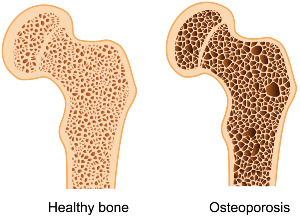About SSFP
About Us
Student Application
Subscribe to Our Newsletter
SSFP in the News
Members of Our Publishers Circle

Astronauts may want to prepare for their next space mission by bringing exercise gear for their legs.
When astronauts spend time in space, they undergo some loss of internal support in their bones. This leads to the bones becoming thinner than before taking off into space. Space trips that last at least six months are equivalent to about 20 years of aging through bone loss. However, a new study shows that a year back on Earth rebuilds about half the strength originally lost in the affected bones. Leigh Gabel, an exercise scientist at the University of Calgary in Canada, says that “bones are a living organ” and that the bones in our body are “constantly remodeling.” Gabel was a part of a team with 17 astronauts who spent from four to seven months in space. Their team used a certain type of a CT or computer tomography scan to show the bones in their bodies, which was used to measure the structure of their bones on a fine scale. They focused primarily on the structures of the lower leg and lower arm which showed details on a scale of 61 micrometers.
The astronauts took images of the bones in the lower arm and leg four times: once before they took flight, when they returned home, and then again six and 12 months later. From each of those photos, Gabel’s team could determine the bone strength and density. A year after returning to Earth, astronauts that went to space for fewer than six months regained all their bone strength they had before taking the flight. However, those who stayed longer in space suffered more permanent bone loss in their shin bones. Surprisingly, the lower arm showed almost no loss, likely due to the bone not being weight-bearing, unlike the lower leg bones on Earth. Instead, arm bones get stronger in space than on Earth because astronauts rely on exercising their arms by pushing off handles and doorways in space.
Steven Boyd, a Calgary exercise scientist, said that increasing weight-lifting exercises in space can reduce the severity of bone loss in the legs. “A whole bunch of struts and beams all held together give your bone its overall strength,” Boyd said. “Those struts and beams are what we lose in spaceflight.” When Gabel’s team returned to Earth, they discovered that the remaining microstructures thickened. Bones can likely survive in space longer than a year or two, but with longer time in space, people can expect bigger bone loss with a more severe recovery process. This is very concerning for longer missions, especially for missions to Mars in the future, which could last two years. Physiologist Laurence Vico expressed the idea that space agencies should consider additional health measures for astronauts' bones, such as a nutrition to either reduce bone loss or increase bone formation. Astronauts are hoping to learn more about bone loss during a long stays in space, and how to prevent it.
[Source: ScienceNewsExplores]
Loading Comments...